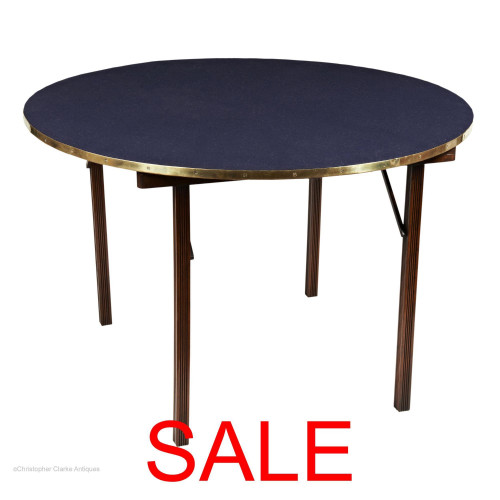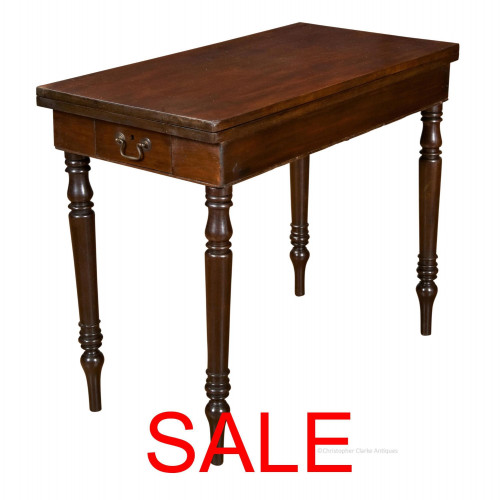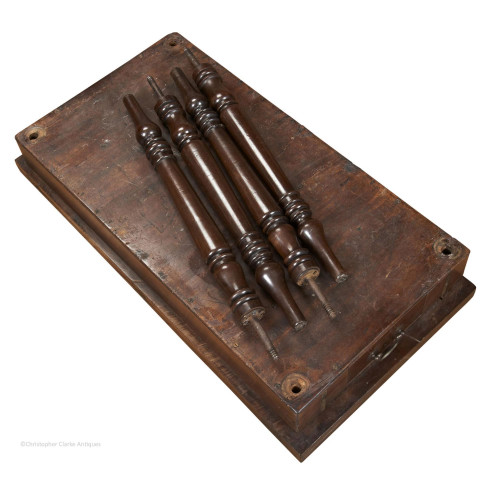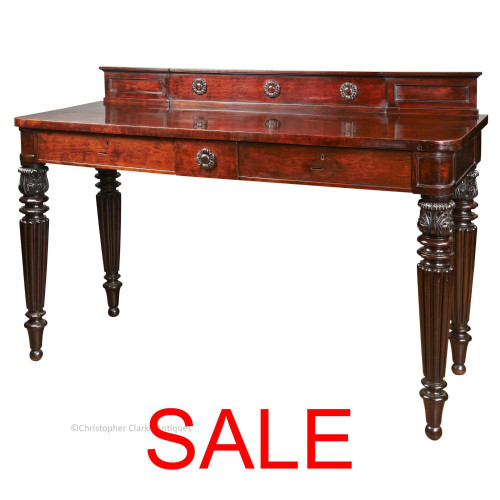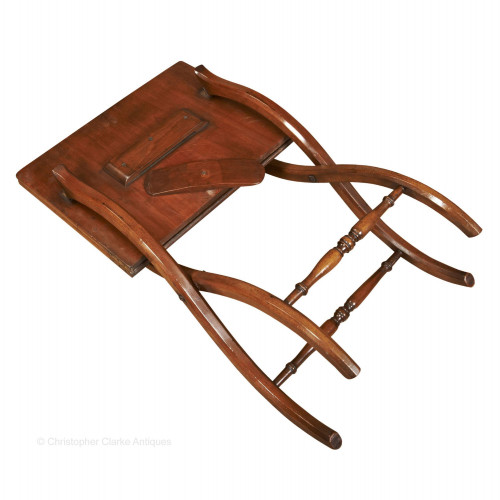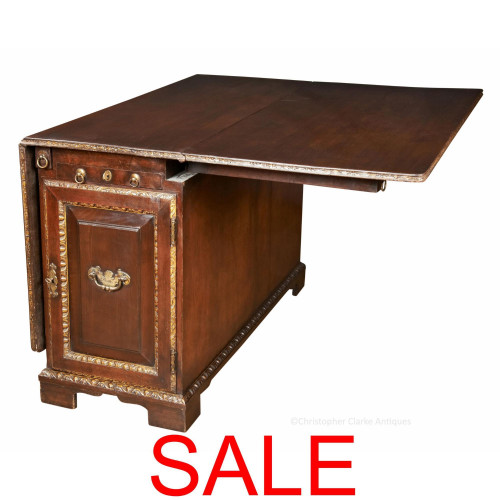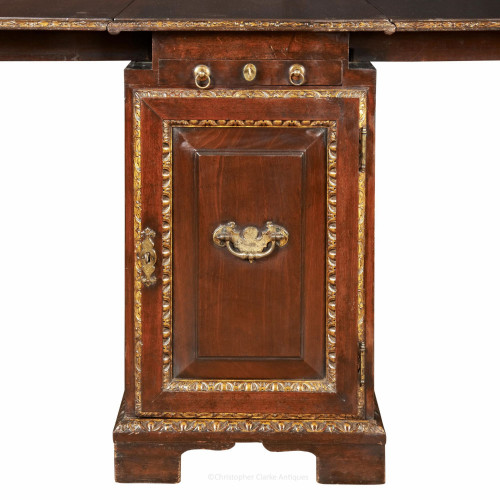Double Extending Camp Table
Double Extending Camp Table
83346
A mahogany Camp Table with two leaves allowing it to triple its length.
This table is rare for having the two leaves, with the standard design having just one. It also stands out for having castors to the X frame legs. The design is described by Loudon much better than I could below. When set for use at its narrowest size, one leaf hangs vertically to the side of the open X frame legs whilst the other is set as the top over the extended webbing. The Butler's tray can then be sat on top of the table or used separately. For use at its largest size, the two leaves are unfolded and the legs are screwed into their brass plate sockets to hold them in the horizontal position. The tray is then placed on the space between them.
The quality of this table is very good. The mahogany used is good and the X frame legs and stretchers are wider and cut with a cock bead line. They have shaped blocks to their tops to set the gilt brass hinges wider so that the top overhangs the legs. The X frame legs have good, capped castors set at an angle. The tray is associated with the table and the turned legs are replaced but this is fairly typical for this form of Camp Table.
When stored, this Table takes up a relatively small space. The two leaves hang vertically alongside the folded X frame legs, held to them by mahogany twist catches. The removable, turned legs are held by webbing straps to the X frame and the tray is separate. This is a very versatile table that can be used in three different lengths or folded up when not in use. Double versions of this form of table are uncommon. Circa 1800.
Extended size is given.
The Camp Table
Loudon described and illustrated these tables in his Encyclopaedia of 1839 as 'a very useful article, called a camp table, from its going into little bulk, being light, and being used by officers in camps … opened out to its full extent; the top being hinged to the two legs, and supported by a portable leg which is fastened into it by a screw and socket … and can be removed at pleasure. When not in use, this leg is fixed to one of the legs of the stand by two pieces of girth webbing which are fastened to the leg of the stand. When the stand is opened to its full extent, it stretches out, as a top, three pieces of webbing, which serve as a tray-stand; and a tray is generally made of a proper size to go along with the table. This table may be used as a common table; the hinges projecting above the rail of the stand in such a manner as to let the top turn round either way. When the table is shut up; there are two turn buckles on the legs to keep the top fastened, and to prevent it from swinging about when the table is moved. In families, accustomed to give large dinner parties, these tables are found useful, as forming additions to the sideboard: they are also brought in requisition when parties are given in the open air, or when a meal is taken in any room deficient in tables.'
Encyclopaedia of Cottage, Farm and Villa Architecture and Furniture - J. C. Loudon
Dimensions:
Circa 1800
Mahogany
England
The period tray is associated and the removable legs are replaced. Historic brass plates to one leaf to repair a split.
RELATED ITEMS











